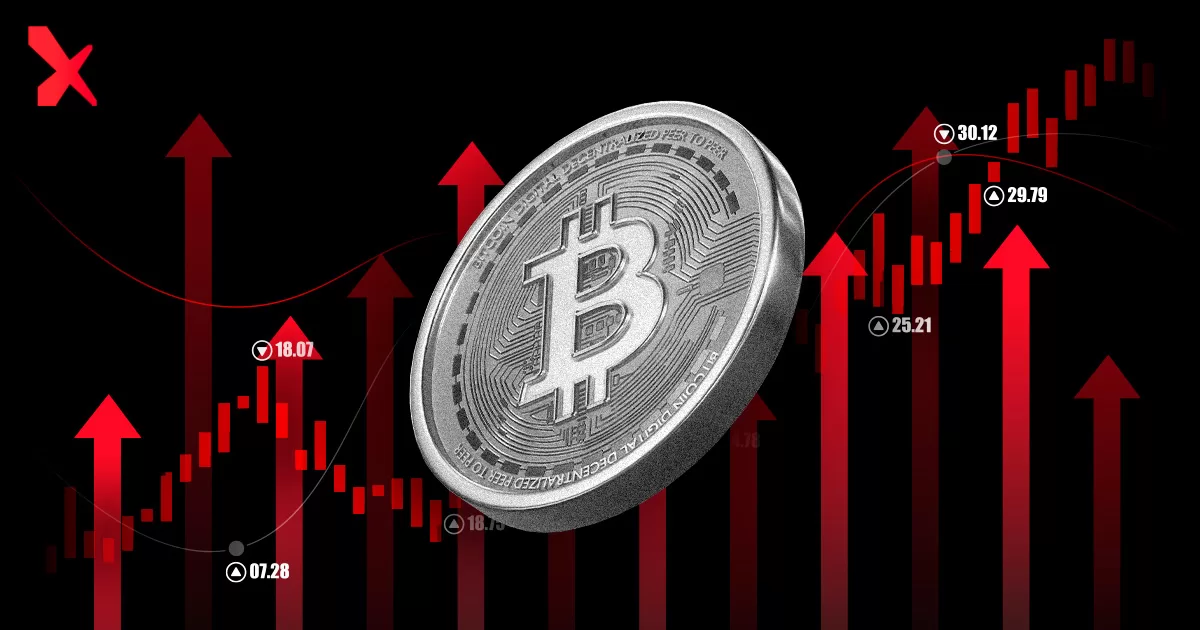Trading Signals 05/02 – 09/02
Bitcoin Growth: Causes and Prospects

On December 6th, Bitcoin (BTC) surpassed the $44,000 mark, momentarily reaching $44,480, marking a 4.5% increase within a day and setting a new high for the year. The last time Bitcoin traded above $44,000 was in April 2022.
The rapid rise of Bitcoin began in mid-October, following news of the potential approval by the U.S. Securities and Exchange Commission (SEC) of the first spot exchange-traded fund (ETF) for Bitcoin. In less than a month, the value of the leading cryptocurrency surged by nearly $10,000.
Other factors contributing to BTC’s growth include the increasing network hash rate and investor optimism about the recovery of the U.S. economy. Additionally, investor expectations are buoyed by upcoming changes in crypto industry regulation. The crypto world is also eagerly anticipating a Federal Reserve rate cut in 2024, which is expected to benefit risk assets.
Interestingly, just a year ago, Bitcoin was in a severe slump. Last December, it was valued at $16,000, and it was around that time that the FTX exchange and its founder, Sam Bankman-Fried, were embroiled in a scandal leading to his arrest for fraud.
Investments in crypto funds over the past 10 weeks have reached $1.76 billion, or 4% of assets under management (AuM), the highest level since October 2021, when the U.S. launched a futures ETF. Trading volumes on ETPs remain high at $2.6 billion, as reported by CoinShares.
Nuances
Bitcoin is growing, but its 24-hour trading volumes are three times lower than they were at the same price levels during the last cycle. This is concerning.
Lowering interest rates might not work. The global economy is teetering on the brink of recession, and there could be a severe liquidity shortage worldwide. Therefore, even if rates are lowered, it’s not certain that a “river of money” will flow into crypto.
By the way, the effect of lowering rates will only be felt six months after it happens, just like with halving. So there might not be enough fuel for a skyrocketing rise anytime soon.
Moderate Forecast
Given these factors, the price increase of major cryptocurrencies seems almost inevitable. Assuming there won’t be a significant capital outflow from the market soon, market participants are paying less attention to risks.
Indeed, this is the current situation. The SEC is in negotiations regarding ETFs, not only with Grayscale, whose case against the regulator was lost in August, but also with other companies that have applied to launch Bitcoin exchange-traded funds. The market is confident that these will get the green light early next year: the deadline for reviewing applications from Ark Invest and 21 Shares is January 10, and BlackRock’s application is set to be reviewed in March.
Inflation in the U.S. is decreasing, and despite Federal Reserve officials stating that it’s not yet time to lower rates, no one expects them to rise either. The absence of negative news also adds to investor confidence. The end of the year, with expectations of a Christmas rally in the markets, also plays a psychological role.
Therefore, it can be assumed that, barring any negative news, Bitcoin’s price could reach $50,000, although this is more likely to happen next year.
Risky Forecast
Bitcoin will break the $100,000 level before the upcoming halving in April 2024, predicts Adam Back, a veteran of the industry and CEO of Blockstream. Regarding the long-term movement of digital gold’s prices, the entrepreneur agrees with BitMEX co-founder Arthur Hayes’s opinion that it will reach levels between $750,000 and $1 million by 2026.
Oil: A Review of Early 2024
China’s Economy: Early 2024
Simple Strategy for Beginner Traders

